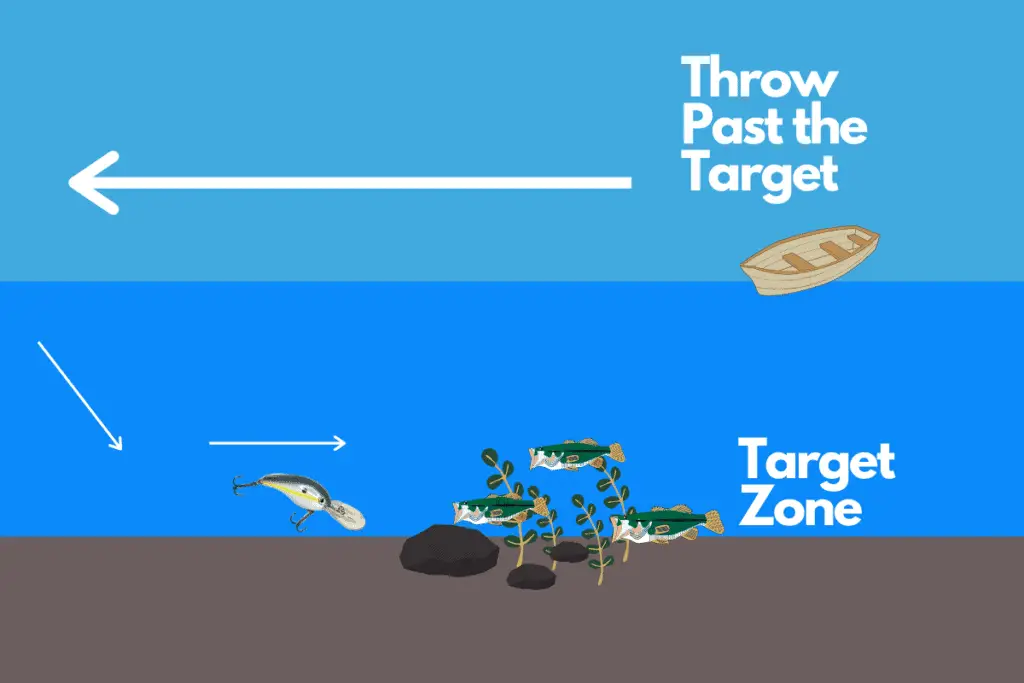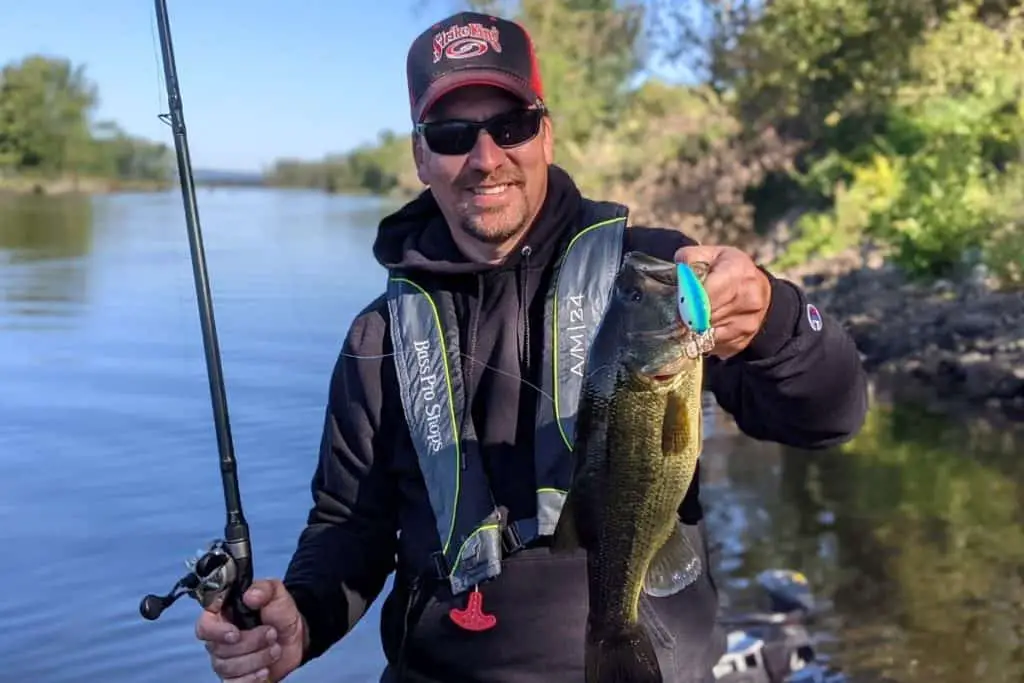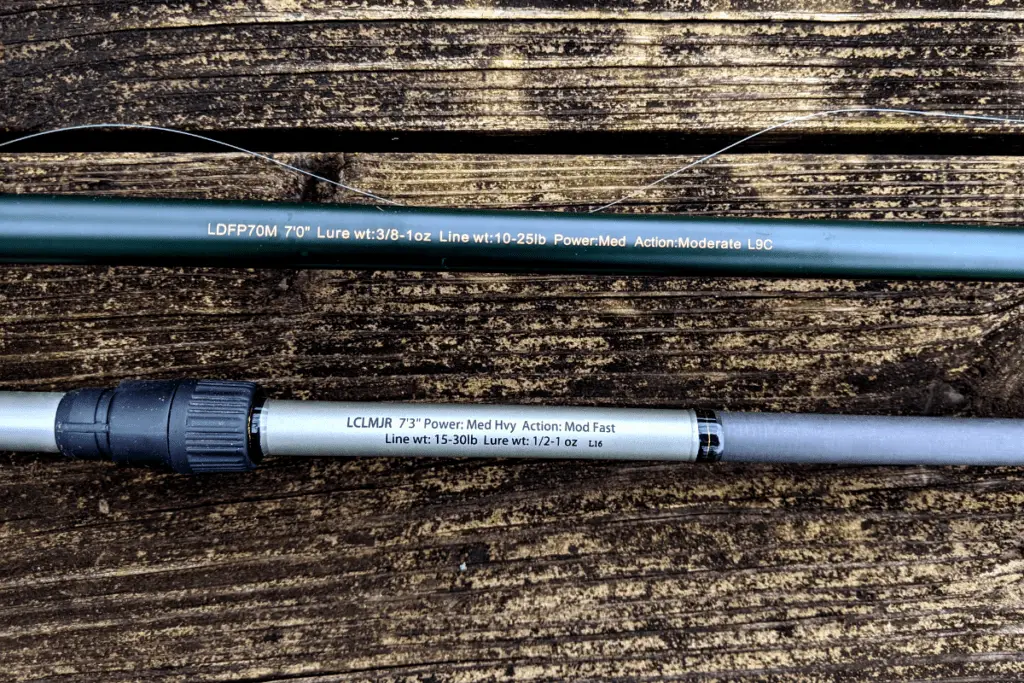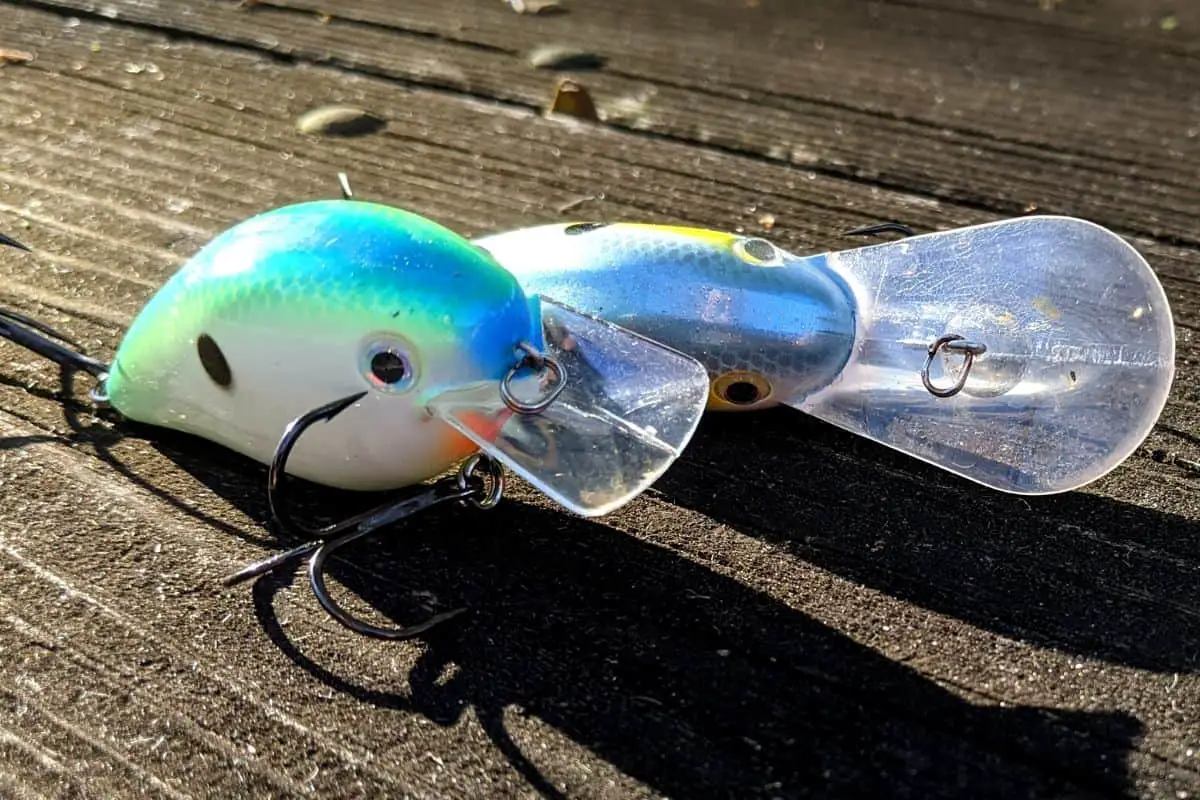There is a wide range of gear ratios on the market. Using the proper reel for crankbaits will directly translate to more bites.
A low gear ratio reel, like a 5.2:1, is ideal for crankbait fishing. Crankbaits work best when retrieved at lower speeds.
The bass fishing world is obsessed with high-speed reels. And for many techniques, higher gear ratios excel, but not with crankbait fishing.
Gear Ratios are Constantly Changing
Just a few years ago, a reel in the 7.2:1 range was considered fast. Really fast. Now anglers can find 8.2:1 reels all over.
Our definition of what is fast, or slow, has changed.
It is difficult to find a reel that is geared at 5.2:1 Therefore a lot of crankbait anglers are settling for baitcast reels in the 6.2:1 range.
Why Slower Gear Ratios for Crankbaits
David Fritts, one of the best crankbait anglers of all time, suggests about 21” of line recovery per turn.
That is slow.
The below table lists popular gear ratios and their inches of recovery per turn.
| Gear Ratio | Inches of Recovery Per Turn (RPT) |
| 5.1:1 | 21″ |
| 6.2:1 | 25″ |
| 7.5:1 | 31″ |
| 8.3:1 | 35″ |
Deep diving crankbaits perform the best and have the most effective action when retrieved as close to this 21” of recovery as possible.
The lure also dives more efficiently and maintains its depth longer than if it is reeled back too quickly.
When a deep diving crankbait is digging and grinding into structure it is more apt to trigger reaction strikes. When the lure is plowing through open water and never making contact with anything, the odds of a strike go way down.
A deep diver brought back too quickly will often miss its optimum depth zone.
(Here is an article explaining why crankbaits catch big bass and what size crankbait to use.)

Make Extra-Long Casts for More Effective Crankbait Fishing
When really long casts are paired with a lower gear ratio reel, the odds of catching bass on deep divers increase exponentially.
By the nature of the lure, it takes time for it to reach depth and then it pulls upward towards the angler.

The actual time the lure is really working is not nearly as long as we would think.
When using deep divers, it is important to throw well past the intended target. Then by the time the lure reaches depth, it is going to dig and grind its way across the bottom where you want it to.
To help with extra-long casts watch the below video.
The Situation Where a Higher Gear Ratio Can Work for Crankbait Fishing
When fishing with squarebill crankbaits, there are many times when a burning retrieve is preferred.
And by burning, I mean reel as fast as you can. Literally.
The extreme speed triggers bass to attack.
(Here is an article about two strategies for getting bass to bite.)
I was hesitant when I was first told this, but after years of burning squarebills, I can say with confidence it works and works well.
It is amazing to think that no matter how fast we reel in that squarebill, the bass can chase it down. Their initial burst of speed is impressive.

Lipless Crankbaits and Gear Ratio
This depends on how you prefer to fish your lipless crankbaits.
If you are a straight cast-and-retrieve angler, then the lower gear ratio is what I would use.
I like to let my lipless crankbaits flutter to the bottom and then give the rod a twitch to make the lure hop. Then I let it flutter down again. It is very similar to how you may fish a jig hopping along.
In this situation, I will use a higher gear ratio reel.
When fluttering a lipless crankbait, the strike often occurs as the lure falls. Pulling in extra slack is important to getting a good side sweep hookset. We will not usually feel the bite but instead will feel weight.
I have used a lot of reels in that 7.2:1 range for this technique.
Best Line and Rod for Crankbait Fishing
To help get our lures to depth, it is a good idea to use fluorocarbon line when fishing crankbaits.
Fluoro sinks and will help the lure get to depth quicker. Fluoro is also very abrasion resistant which is perfect when digging and driving that lure into a rocky bottom.
As far as a rod, using one that is specifically designed for crankbait fishing will help both with casting distance and hooksets.
Most crankbait rods will either be fiberglass or composite (a combination of glass and graphite.)
A composite rod has good parabolic action which helps to keep the bass hooked up and not pull loose.
Treble hooks are more of a grabbing hook, whereas single hooks are more apt to penetrate clear through the lip. The give a quality crankbait rod gives anglers will bring by far more bass to the boat when using a deep diver dangling with trebles.
(Here is an article on rod selection for newer bass anglers.)

It is Easy to Fish too Fast When Crankbait Fishing
I don’t know about you, but I get excited when bass fishing. When this happens I tend to do everything too fast. Including retrieving a crankbait.
The lower gear ratio reels keep me in check.
With the difficulty of finding reels in the 5.2:1 range, I would buy several if you find them. Especially if you are a dedicated crankbait angler.
Tight lines. Be safe and make sure that you encourage someone today. You never know how you may change their life forever.
Isaiah 6:8

